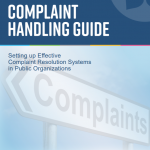The Patient Concerns Resolution Process (PCRP) through Alberta Health Services is available to patients, family members and the public to express concerns about the health services they receive. Enactment of the Regulation in 2006, expanded the Ombudsman’s jurisdiction to include investigations of the complaint-handling process of regional health authorities. As part of the PCRP, the complainant is also informed of their right to contact the Alberta Ombudsman to request an external review should they feel the process used to review their complaint was not fair. Once all avenues for review or appeal are exhausted, complainants can come to us as the office of last resort.
Under the Patient Concerns Resolution Process (the Regulation),
“A patient or a person acting on behalf of a patient or in the interest of a patient may make a complaint to a health authority if the patient or person has concerns regarding:
- the provision of goods and services to the patient,
- a failure or refusal to provide goods or services to the patient, or
- the terms and conditions under which goods and services are provided to the patient
by the health authority or by a service provider under the direction, control or authority of that health authority.”
According to the Regulation, a person acting on behalf of a deceased patient, may also make a complaint. The Regulation calls for the appointment of a patient concerns officer(s) responsible for dealing with complaints by the health authority.
“A patient concerns officer must:
- be reasonably available to respond to complaints and to assist patients, and persons acting on behalf of or in the interest of patients, who want to use the patient concerns resolution process,
- facilitate the timely, expeditious and efficient management of complaints,
- inform complainants about
- other persons or organizations that may have authority to address the complaint, and
- the authority of the Ombudsman in relation to the patient concerns resolution process,
- co-operate with the patient concerns officers of any other health authority involved in the complaint,
- give notice of a complaint to a service provider that is responsible for the goods or services that are the subject of the complaint, and
- prepare a written statement regarding the outcome of each complaint made under the patient concerns resolution process.”





